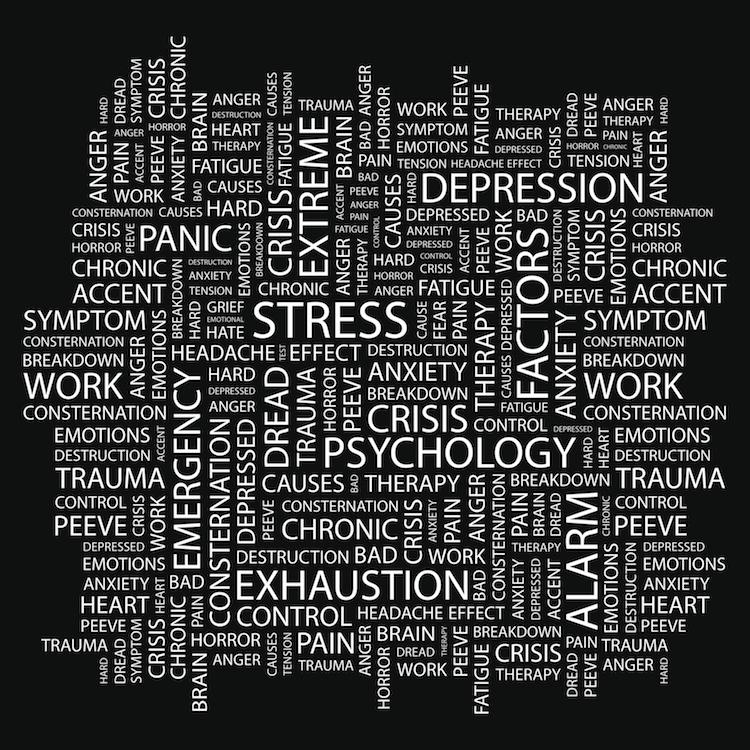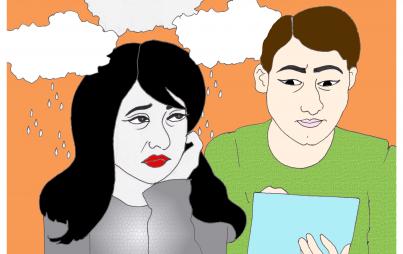
People who have been in relationships with someone diagnosed with borderline personality disorder have often said that the person is passionately in love with them one minute, and then are icy cold with hatred and defiance the next.
Since I am nearing the end of my coursework in my clinical psychology doctoral training, friends come to me with questions about their spouses and loved ones. In two recent cases, my friends were convinced that their spouses’ behavior must be due to an undetected bipolar disorder. However, after listening to their stories, I wasn’t convinced.
Borderline personality disorder was discussed at enormous length during the course of my training, because it seems to be frequently misdiagnosed, undetected, or confused with other disorders. I felt that both my friends’ spouses’ symptoms were more indicative of borderline personality disorder than bipolar disorder. And I ended up being right! Psychologists later diagnosed both my friends’ husbands with borderline personality disorder.
The symptoms of borderline personality disorder and bipolar disorder can often overlap. Understanding the difference is the first step in getting proper care for them and yourself, and being able to better relate to each other.
The most common symptoms of borderline personality disorder include: a feeling of emptiness inside, inappropriate display and control of anger, suicidal behavior, a long history of difficulty with relationships, and impulsive behavior ranging from self-injury to risky, destructive behavior.
People who have been in relationships with someone diagnosed with borderline personality disorder have often said that the person is passionately in love with them one minute, and then are icy cold with hatred and defiance the next. It is important to note that you can’t diagnose the disorder in childhood. You have to wait until late adolescence, interview the patient and look at patterns in their history of relationships with others.
There are several different types of bipolar disorder. However, the most common symptoms include: mood swings that can be categorized as either a major depressive or manic episode. In a manic episode, people go through an overly elated mood for a week or more. They may not sleep a lot and are overly talkative. Their minds are working quickly, while self-esteem seems overly inflated, and they can engage in impulsive behaviors that get them into a lot of trouble.
One woman I met with bipolar disorder spent over $40,000 on her credit cards on a shopping spree during a manic episode; her marriage was hanging on a thread as a result.
During a depressive episode, a person can go through many of the typical symptoms of depression, such as: sadness, loss of energy and interest in things they once enjoyed, and decreased appetite. A person that displays symptoms of either mania or depressiveness for at least one to two weeks (in order to be in one of the two episode types) and episodes don’t necessarily go away quickly.
The two disorders are often confused because of the overlap of symptoms, such as impulsivity and sadness. I think the main difference to understand is the thought patterns and impairments to relationships that happen as a result of behaviors.
In personality disorder, the person’s thought processing and understanding of how to deal appropriately with people based on what’s accepted in culture, are severely impaired. There is a consistent pattern of impulsive and destructive behaviors that emerge as the person’s way of getting attention. They don’t understand that their behavior is hurting them and inappropriate.
People with bipolar disorder don’t feel that emptiness during manic episodes, and when they are impulsive, it’s due to the high the mania gives them, not an attempt to fill a void and inappropriately gain attention.
An example of borderline personality disorder: a woman told me that her spouse tells her he loves and adores her. He begs her for attention one moment and then later in the day, he tells her he wants a divorce, never should have gotten married, and no longer has the ability to love her. He would go into sudden fits of rage, throwing things around the house and, at times, striking her. She was bewildered as to what she did to provoke him to such an extreme. Once they received the diagnosis of borderline personality disorder and read up on the features, she was able to understand the functions of the extremes between passionate love and hatred. Now she knows why he thinks the way he does, and is working to improve their marriage through this understanding.
Understanding the symptoms of someone suffering from either bipolar or borderline personality disorder can help you understand why they are behaving as they are, and (hopefully) help you not take their behavior personally.
More articles on bipolar disorder:
What It’s Like To Be Medicated – And Not – With Bipolar Disorder
The Good and The Bad Of My Bipolar II Diagnosis And Demeanor
I Can’t Stand The Sun: My Struggle To Find The Right Bipolar Meds
On Being “Crazy”: My Life With Bipolar Disorder







